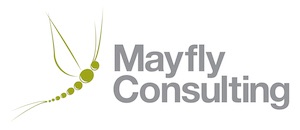Published: 29 Jun 2023
Do pictures still paint a thousand words?
It’s a strange question to ask when we’re surrounded by social media which relies on a carefully selected picture to attract the attention of followers or readers amongst all the other noise they may receive.
And, whilst many people are good at ‘posting’ are we losing the ability to communicate well using pictures we create?

I regularly ask a group of leaders to draw a picture of themselves when they actually relax and don’t think about anything. You know that rare moment when you truly switch off, if you can find it.
Over the course of around 30 business workshops that contains delegates of between 20 and 60 years of age, the overwhelming conclusion I have come to is that leaders have forgotten how to draw!
So why might this be important?
Pictures are a vital way in which we communicate, especially if our audience is visually preferenced. i.e., they prefer to think in pictures rather than hear words, or connect to feelings when receiving or giving information.
However, if you walk into a classroom of young children, paintings, collages, drawings, and other visual stimulation are everywhere. So, what happens to stop this and is there some value in getting it back into our workplaces?
A while ago I engaged a ‘visual minute taker’ for a three-day business conference. This involved installing two-metre-high boards around the conference venue, which over the course of the conference became covered with a visual representation of everything we discussed, created by an artist.
What was interesting about that event, instead of using the old-fashioned way of tacking up numerous flip charts. We found ourselves being drawn to the stories, through art, of the business strategy that we’re being told, not just words on a plain sheet. It also, became valuable collateral to use inside the business for the next year. Not just to explain the strategy but to also add colour to the plain walls around the site.
So, is there some merit in rediscovering our lost ability to draw?
Maybe there is. But perhaps, lets also include the ability to describe business circumstances well enough to enable people to build a mentally rich picture of what you may be talking about. So, adding colour, structure, sweeping lines, abstract images, references to well known pictures might well be something that we can add to our leadership vocabulary to good effect.
And is it easy?
Like any new change which we ask people to make, it takes practice! If you don’t believe me, try to describe to someone exactly (and I mean describing every stage carefully) how to tie your shoelaces. Right from loosening the laces and which fingers to place where on the shoes to checking that the loops are roughly equal by standing up and admiring your finished knots. It’s not as easy as you imagine. If you really doubt that, write your instructions down on a piece of paper and then get someone to follow then to see what a mess they get into. Isn’t that why IKEA furniture is reasonably easy to assemble, after all, it’s all done in pictures!
The other thing to consider is that from an early age we’re conditioned to accept stories. It’s hard to find someone, even in these modern media days, that hasn’t heard a nursery rhyme, or if they’re slightly older tells them to children or grandchildren. But at some point, we seem to become less able to tell stories. Just Google ‘story telling courses’ if you don’t believe me! You’ll get over sixty million results!
This week a UK sprinter Zharnel Hughes became the second faster man in Europe to run 100m, clocking an impressive 9.83 second time and breaking the UK record. In his post-race interview, he said that he’d written down his time so that he could visualise it. He also mentioned that a large part of his preparation is to visualise each stage of the race.
Visualisation is not a new concept in high performance sports. Whether you’re David Beckham taking a free kick, Simone Biles completing a vault or like Zharnel, haring down a track, they all see themselves executing their best performance. How many leaders have you ever heard say the same thing?
By the way, he’s already visualising when he will have achieved 9.7 seconds for 100m!
Leaders aren’t necessarily there to break world records but business performance, innovation, motivation and providing clear direction are the ‘buzz words’ that you’ll hear in many leadership events.
So, before the next time you want to get a clear message across, with associated content, and make it different from the email that your people normally get … perhaps you should go and buy some pencils!
